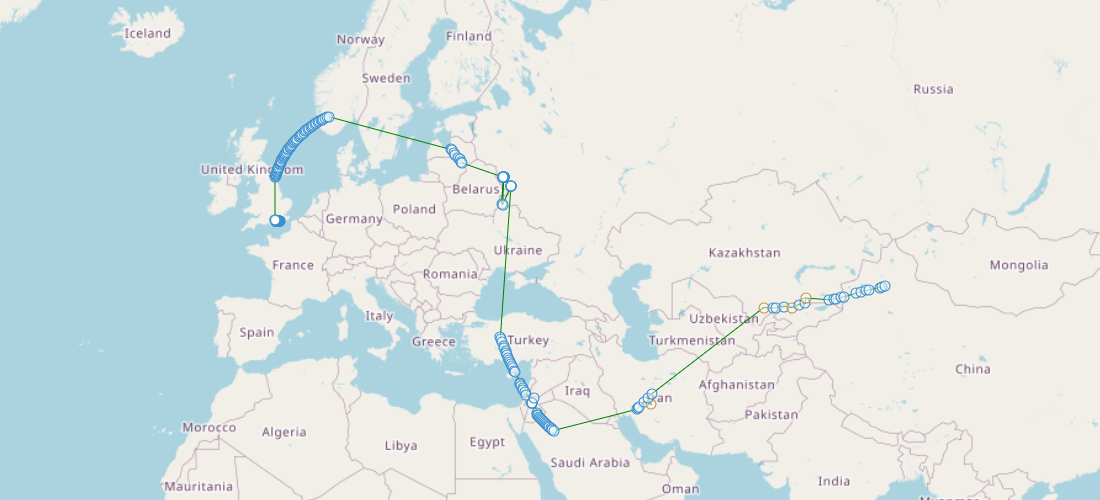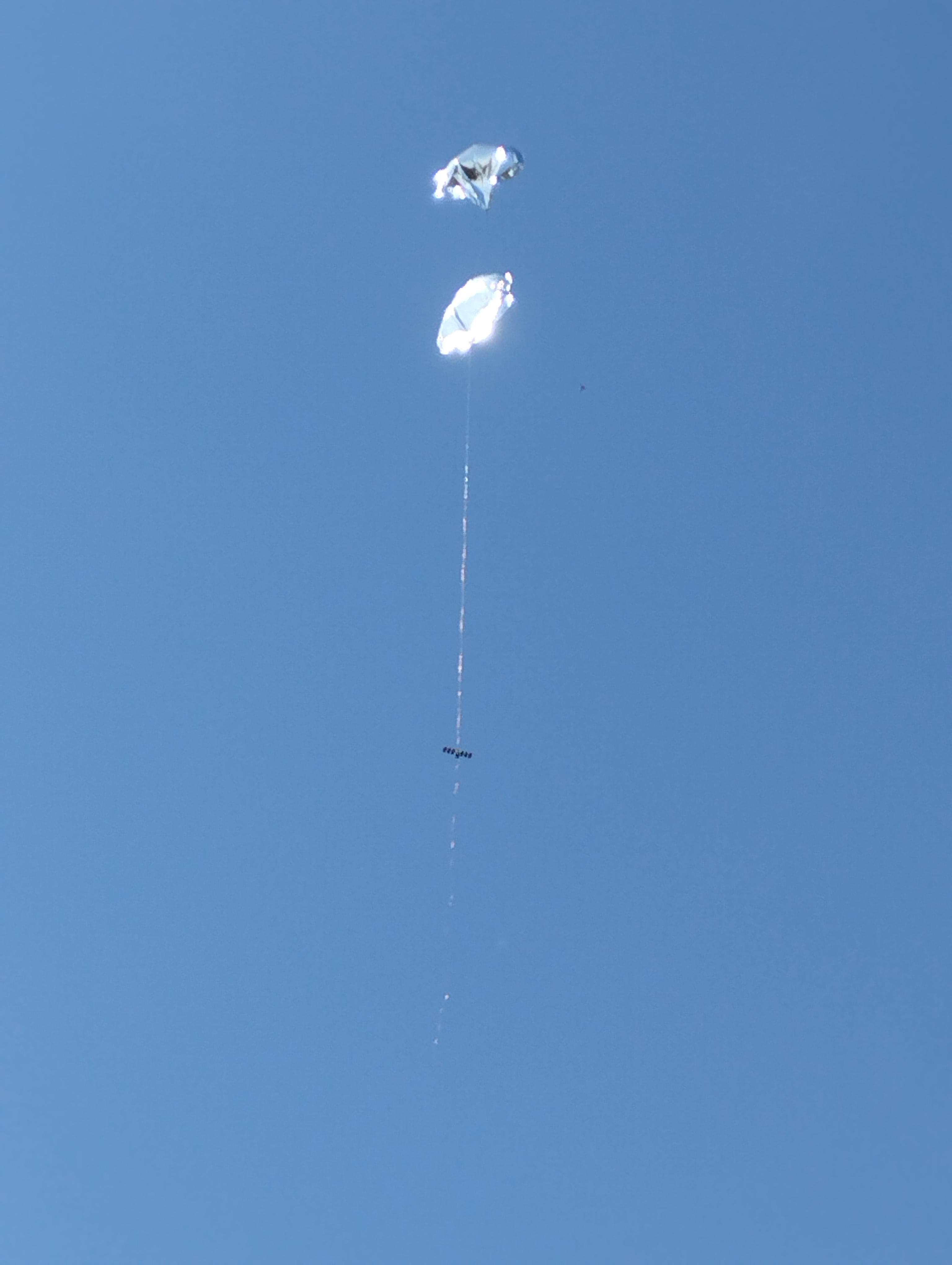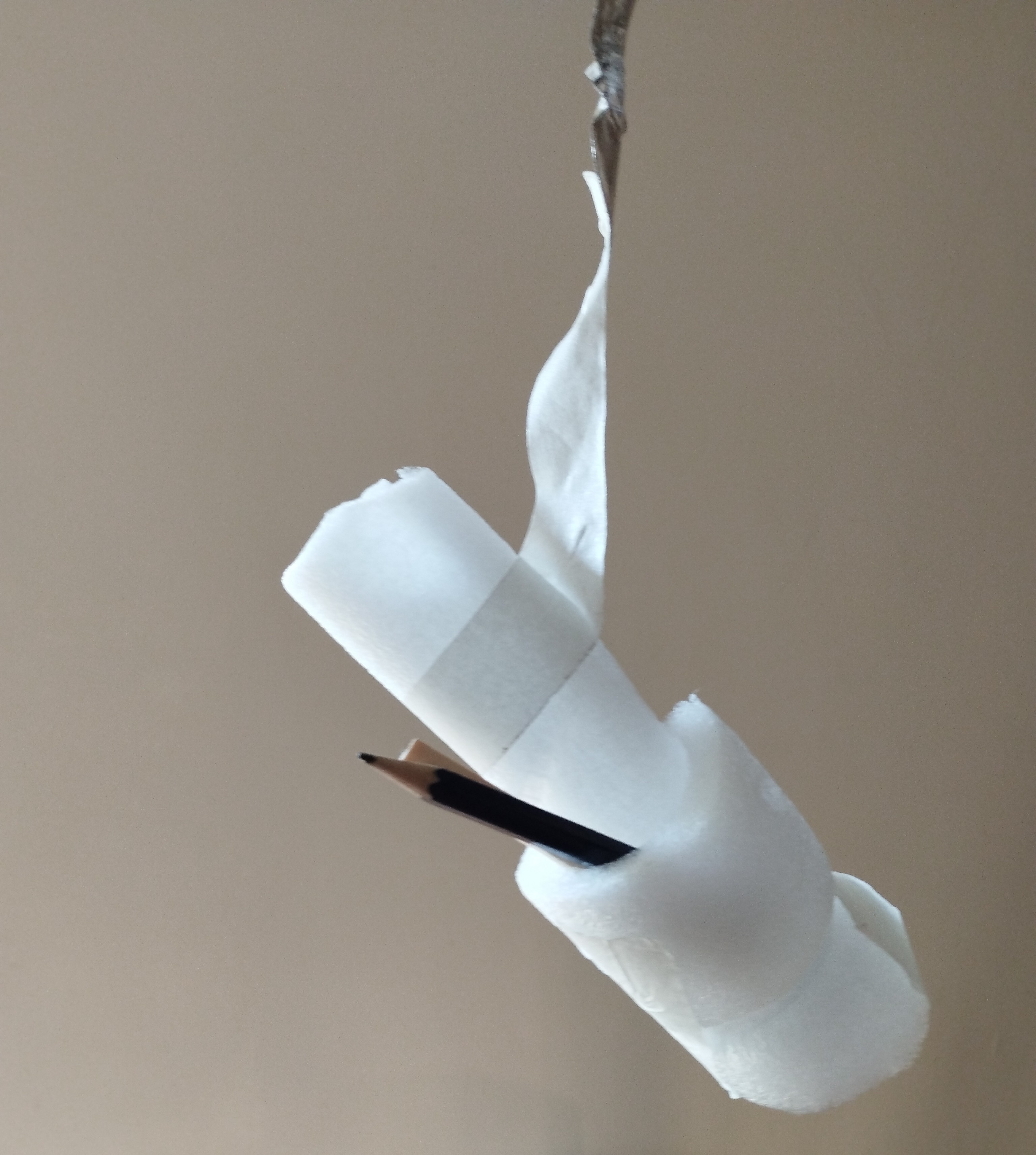Pico-5

We used the same tracker as before but added a lithium supercapacitor in parallel with the solar cells. Initial testing showed that the tracker could complete roughly 1 transmission cycle (10 minutes) when powered by the supercapacitor with the panels in shadow. This should improve the reliability of the power supply to the tracker. We used the same pannel configuration as last time.
We decided to use two Qualatex 36” balloons instead of one in an attempt to reduce the pressure in each balloon (the lift for the payload is split between the two balloons). In order to reduce the risk of static buildup we attached the balloons using a length of nylon wire so one floated above the other.
Each balloon had about 0.85g of free lift and the payload was slightly heavier due to the addition of the supercapacitor and part of a wooden spoon at 19.5g. That made for a total lift of 10.6g per balloon.
We added a very small weight to the bottom of the trailing antenna in an attempt to keep it straight.
Weather on the launch day (11/04/25) was very still with negligable winds and the launch went smoothly. In fact there was so little wind that we could see the balloon for over an hour after launch. Luckily the winds picked up overnight and it covered some distance before morning. Due to launching earlier in the day we were able to confirm the balloon was floating at 8.5km before the sun elevation got too low.
The supercapacitor has worked well so far and transmissions have been much more stable, even with low sun elevation. Heavy cloud does seem to still be an issue. The maximum recorded panel voltage is 4.2v, which is cutting it a bit close to the maximum rated charging voltage of 4.2v. Maybe a voltage regulator when we build our own board.
The GPS was subject to jamming over Belarus, and briefly over Israel. Luckily they were jamming it with a GPS signal with the correct time, allowing the WSPR transmissions to continue unaffected.
The float altitude has risen to approximately 8.8km, likely due to stretching of the balloons.
The balloon is still up but we have already set personal records for both time in the air and distance travelled. I’ll update the post when it goes down. Tracking link is here

Isaacs very scientific device for measuring lift.

Next Steps
-
We have ordered some PartyWoo 50” (apparently this is half of the circumference?!) round foil balloons that should hold a higher pressure (more free lift and leeway for gas leakage). They should also float at a higher altitude.
-
Need to start developing our own tracker. Definitely some improvements to be made over the current version with regards to weight and sensors. Pressure data would be useful to verify GPS altitude.
-
Need to find a source of hydrogen for slower leakage and higher float.
-
Possibly fly an APRS tracker, although coverage seems limited.
-
SSTV. Images would be cool.
-
Test a cutdown mechanism so we can recover payloads. Would allow us to fly more expensive equipment and get good quality images.